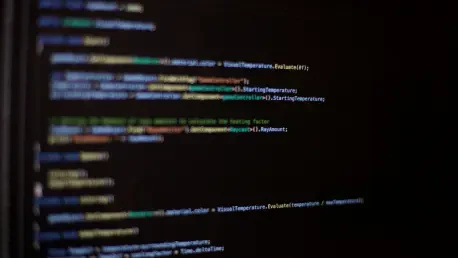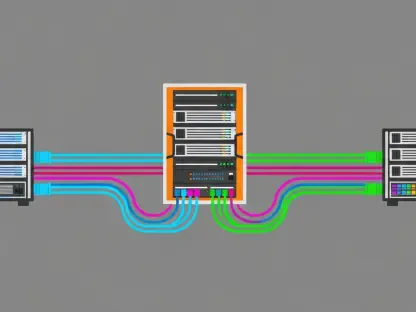Open-source software, with its collaborative and transparent development model, has been both a boon and a challenge for security. As the software becomes increasingly interlinked and integral to myriad applications, the looming threat of hidden vulnerabilities poses significant risks. Recent advancements in artificial intelligence, particularly the capabilities of large language models (LLMs), have opened new frontiers in the search for these elusive flaws. This innovative approach was highlighted at a recent technology conference, where AI’s potential to uncover shadow patches in open-source projects was a focal point. By leveraging AI-driven tools to analyze changelogs and other data, experts aim to address vulnerabilities that often go unnoticed until they are exploited.
AI-Powered Vulnerability Detection
The process of identifying vulnerabilities in open-source software has traditionally relied on manual reviews and community reporting. However, given the sheer volume of code and its dependencies, this method is often insufficient and reactive rather than proactive. Large language models, like ChatGPT, offer a promising alternative. These AI models can sift through vast amounts of data with a level of precision that is unachievable by humans. By examining changelogs—the detailed records of modifications to code—these models can identify linguistic patterns and red flags indicative of undisclosed patches or shadow patching. AI’s natural language processing ability can pierce through the veil of obfuscating terminology often used in documentation, revealing critical vulnerabilities lurking beneath the surface.
An example of this process in action was demonstrated by Aikido Security from Ghent, Belgium. Their system managed to discover over 500 undisclosed vulnerabilities in open-source software within a year. This achievement underscores AI’s potential in transforming how vulnerabilities are detected and addressed. Of these vulnerabilities, a significant portion was found to be critical or high-risk, posing serious security threats if left unchecked. By streamlining the initial detection phase through automation, AI enables human security experts to focus on verifying and addressing the most pressing threats.
A Systematic Approach to Uncovering Shadow Patches
Aikido Security employs a meticulous six-step process in its use of AI to unearth hidden vulnerabilities. Initially, the focus is set on changelogs from the most popular open-source tools. Automated scrapers gather raw data, which is refined by an LLM into a standardized output—overcoming the lack of universal formats for changelogs. The pivotal stage involves a specialized AI model, like ChatGPT, that has been trained to interpret any cues of vulnerability fixes within the data. The AI is designed to recognize subtleties that could signal underlying security concerns, such as cryptically termed modifications.
Once potential vulnerabilities are identified, they undergo cross-referencing with public Common Vulnerabilities and Exposures (CVE) databases to exclude already known issues. The resulting undisclosed vulnerabilities are verified by human experts, ensuring a precise evaluation of their severity. While the system does not currently allow for immediate reporting of these vulnerabilities as new CVEs to avoid premature disclosure, this practice is indicative of a cautious yet progressive approach to vulnerability management. By balancing automation with human oversight, the methodology supports both rapid detection and thoughtful intervention.
Addressing Malicious Intent in Open-Source Projects
The efforts to apply AI in vulnerability detection extend beyond merely identifying patch-related issues. Aikido Security is also pioneering techniques to discover deliberately embedded malware in open-source repositories, using AI to discern potential malicious intent. By examining changes in input validation or other suspicious attributes in changelogs, AI can alert developers to covert security threats. This approach has proven effective, with recent investigations uncovering hundreds of malicious projects, underscoring the necessity for vigilance in software security.
One particular success involved identifying activity from the notorious Lazarus Group, a North Korean hacking organization known for exploiting vulnerabilities. This discovery exemplifies how AI can not only detect existing threats but also monitor evolving threats in real time. The pursuit of employing AI to identify malicious software elements illustrates its capacity to proactively fortify defenses against evolving security challenges. As the complexity of cyber threats continues to grow, integrating AI-enabled solutions will become a pivotal strategy for organizations to protect their software ecosystems.
Future Implications and Considerations
Open-source software, with its foundational principles of collaborative and transparent coding, has proven both advantageous and challenging for maintaining security. As these programs become deeply embedded in a wide variety of applications, the risk of concealed vulnerabilities increases significantly. The growth in interconnectedness means that a single flaw can have widespread repercussions. Recently, advancements in artificial intelligence, especially the prowess of large language models (LLMs), have introduced promising avenues for detecting these hidden weaknesses. This progressive method was showcased at a technology conference, highlighting AI’s ability to identify and address elusive patches in open-source projects. By utilizing AI-powered tools to examine changelogs and other pertinent data, tech experts are now equipped to tackle vulnerabilities that typically remain under the radar until malicious actors exploit them. This proactive approach signifies a critical shift in how we manage security risks, hoping to stay one step ahead in the evolving landscape of software development.









